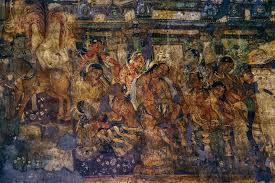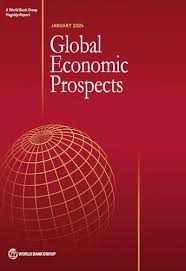Today’s Current Affairs: 17th June 2024 for UPSC IAS exams, State PSC exams, SSC CGL, State SSC, RRB, Railways, Banking Exam & IBPS, etc
Table of Contents
Mitigation Work Programme:

The road to the COP29 to the United Nations Framework Convention on Climate Change in Baku appears bumpy after the mid-year climate talks in Bonn, Germany concluded on June 13, with little progress, according to researchers from the Centre for Science and Environment.
- The Mitigation Work Programme (MWP) is a process established by the United Nations Framework Convention on Climate Change (UNFCCC) to help countries scale up their mitigation ambition and implementation to achieve the 1.5°C goal of the Paris Agreement.
Objectives:
- Foster innovative discussions among policymakers and stakeholders to overcome barriers to scaling up mitigation action.
- Ensure diverse participation to support national processes and practical domestic policy making pathways.
- Identify cost-effective and scalable mitigation opportunities to help countries implement and enhance their Nationally Determined Contributions (NDCs).
- Conduct annual global dialogues and investment-focused events from 2023-2026.
- Focus on equity, sustainable development, and synergies with adaptation, considering regional approaches.
UNFCCC:
- The UNFCCC, established in 1992 during the Earth Summit in Rio de Janeiro, aims to stabilize greenhouse gas concentrations to prevent dangerous climate change, ensuring ecosystems adapt naturally and sustainable development is maintained.
JIMEX Exercise-24:

JIMEX exercise–24 commenced at Yokosuka in Japan.
- JIMEX- 2024 is the eighth edition of JIMEX, since its inception in 2012.
- The exercise includes both harbour and sea phases.
- The harbour phase will comprise professional, sports and social interactions.
- During the exercise, navies of both the countries will jointly hone their war fighting skills at sea and enhance their interoperability.
- Indian Navy’s indigenous Stealth Frigate INS Shivalik is participating in the bilateral maritime exercise. Japan is being represented by the Guided Missile Destroyer JS Yugiri.
- It provides an opportunity to learn from each other’s best practices and facilitates operational interactions between India and Japan.
- The exercise also reaffirms their shared commitment towards maritime security in the Indo-Pacific region.
Ajanta Paintings : Restored

Some of Ajanta paintings housed inside the Ajanta Gallery of Telangana State Museum in hyderabad are being restored with the collaboration of Noor International Microfilm Centre and the Department of Heritage Telangana.
- The Ajanta caves, an archaeological site consisting of around 30 rock cut caves, situated in Aurangabad (Maharashtra).
- The unfinished caves, of which five (caves 9, 10, 19, 26 and 29) are chaitya grihas (sanctuary) and the rest, sangharamas or viharas (monastery).
- The caves at Ajanta are excavated out of a vertical cliff above the left bank of the river Waghora in the hills of Ajanta.
- These are masterpieces of Buddhist religious art that influenced Indian art that followed.
- The caves were built in two phases-
- The first period spans the second and first centuries BCE, attributed the patronage of the Satavahana Dynasty and it is dominated by Hinayana/Theravadin followers of Buddhism.
- The second was during the late fifth CE, possibly during the reign of the Vakataka king Harisena.It is dominated by the Mahayana followers of Buddhism.
Binsar Wildlife Sanctuary : Wildfire

The Indian Air Force deployed an MI17 helicopter to control the massive wildfire in Binsar Wildlife Sanctuary (BWS) in Almora, Uttarakhand.
- Binsar Wildlife Sanctuary is a protected area located in the state of Uttarakhand, India.
- It is situated in the Kumaon region of the Himalayas, approximately 33 kilometres north of the Almora district, Uttarakhand.
- The sanctuary covers an area of around 47 square kilometres.
- Binsar was the erstwhile summer capital of the Chand Dynasty rulers, who ruled Kumaon from the 7th to 18th century AD. situated at the height of 2,420 m.
- According to the local people Binsar was named after the Bineshwar Mahadev temple (A 16th century temple) dedicated to Lord Shiva.
- It is known for its rich biodiversity and stunning panoramic views of the Himalayan peaks such as Chaukhamba, Nanda Devi, Nanda Kot, Panchachuli and Kedarnath.
- The sanctuary is covered by oak and rhododendron forests at higher altitudes and by chir pine forests at a lower height.
- It has 25 types of trees, 24 types of bushes and seven varieties of grasses.
- It is host to more than 200 species of native and migratory birds and endangered species like Indian red fox, jackals, pine martens and porcupines.
- It also houses leopards, ghorals, wild boars, kakars, monkeys and Himalayan black bears and several species of birds including the Himalayan monal, koklass pheasant and Himalayan griffon.
Divya Drishti AI Tool:

A Woman-led Start-up Developed ‘Divya Drishti’, a cutting-edge AI Tool for Personal Identification, under a Technology Development Fund.
- The AI tool “Divya Drishti” integrates face recognition with immutable physiological parameters such as gait and skeleton.
- It was developed by Ingenious Research Solutions Pvt Ltd., a start-up established by a woman entrepreneur, Shivani Verma.
- This innovative solution marks a significant advancement in biometric authentication technology, offering enhanced accuracy and reliability in identifying individuals.
- This dual approach enhances identification accuracy, minimizing the risk of false positives or identity fraud and has versatile applications across diverse sectors including Defence, Law Enforcement, Corporate and Public Infrastructure.
- The AI tool has been developed under the technical guidance and mentoring of the Centre for Artificial Intelligence & Robotics (CAIR), a laboratory of DRDO based in Bangalore.
The Technology Development Fund (TDF):
- The TDF scheme is a flagship programme of the Ministry of Defence executed by DRDO under ‘Make in India’
- It grants aid for defence and dual-use technology development.
- Objectives: To build Indian industries’ capacity and capability for defence technology development, foster a culture of design and development, and create an R&D ecosystem.
- It supports niche technology development, and prototype creation, and achieves ‘Aatmanirbharta’ in defence technology.
Digital Health Incentive Scheme : Extension

The central government has given a year-long extension to the Digital Health Incentive Scheme (DHIS) meant for digitising patients’ health records and linking them with the Ayushman Bharat Digital Health Account (ABHA ID).
- The Digital Health Incentive Scheme (DHIS) is a national initiative by the National Health Authority (NHA) aimed at promoting the adoption of digital health practices in India.
- It was launched on January 1, 2023, under the Ayushman Bharat Digital Mission (ABDM) to create a robust digital health ecosystem and enhance the quality of care for patients.
- With this extension, the scheme will now remain in effect till June 30, 2025.
- Health facilities (hospitals, diagnostic labs), digital solution companies, and other healthcare providers are eligible to participate in the scheme.
- Incentives are provided based on the number of digital health records created and linked to Ayushman Bharat Health Account (ABHA) numbers of patients.
- Healthcare institutions and digital solution entities can register for the scheme through the Health Facility Registry (HFR) and ABDM Sandbox, respectively.
- Transactions that qualify under the scheme include creating any ABHA-linked health record, such as teleconsultations, lab reports, prescriptions, etc.
National Health Authority (NHA):
- It is the apex body responsible for implementing AB PM-JAY.
- It has been entrusted with the role of designing strategy, building technological infrastructure and implementation of “National Digital Health Mission ” to create a National Digital Health Ecosystem.
Liquid Improvised Explosive Device:

Liquid explosives seem to have made a comeback in Jammu and Kashmir militancy theatre after 17 years as a recent raid by police in the Union territory led to the recovery of such “difficult-to-detect (d2d)” Improvised Explosive Devices.
- Forensic examination indicated that it could be trinitrotoluene (TNT) or nitroglycerine, generally used in dynamites.
- Improvised Explosive Device (IED) is a type of unconventional explosive weapon that can take any form and be activated in a variety of ways.
- They are used by criminals, vandals, terrorists, suicide bombers and insurgents.
- Because they are improvised, IEDs can come in many forms, ranging from a small pipe bomb to a sophisticated device capable of causing massive damage and loss of life.
- The extent of damage caused by an IED depends on its size, construction, and placement, and whether it incorporates a high explosive or propellant.
- The term IED came into common usage during the Iraq War that began in 2003.
- All IEDs consist of an initiating mechanism: a detonator, an explosive charge and a casing or collection of projectiles (such as ball bearings or nails) that produces lethal fragments upon detonation.
- In practice, IEDs can be made of many different kinds of objects and materials, including artillery or mortar rounds, aerial bombs, certain types of fertilizers, TNT and other explosives.
- IEDs can also contain radiological, chemical or biological components to increase their lethal and psychological effects.
Chlorella Growth Factor:

Scientists at CSIR-Indian Institute of Chemical Technology (IICT) have spotlighted the potential of Chlorella Growth Factor (CGF), a protein-rich extract derived from the microalgae ‘Chlorella sorokiniana’, as an ideal ingredient for a wide range of food and feed applications.
- Chlorella Growth Factor (CGF) is rich in amino acids and proteins of high quality, making it a promising alternative source for both human and animal diets.
- It contains essential amino acids and nutrients like peptides, nucleotides, polysaccharides, vitamins, and minerals, than commercial soy meal.
- The extraction of CGF involves a non-chemical autolysis process, preserving the integrity of amino acids and other valuable components.
- Adding CGF to chicken feed improves egg quality, showing promise as a better protein supplement for animals.
- Microalgae like Chlorella sorokiniana are considered “under-exploited crops” that do not compete with traditional food crops for space and resources, offering a sustainable solution to meet the increasing global demand for high-quality protein sources.
Chlorella Sorokiniana:
- Chlorella Sorokiniana, an oval-shaped single-celled algae, is a standout in the microscopic realm, boasting a unique ability to grow actively.
- Each cell is a self-contained organism with all the essential nutrients needed for life, making it complete and self-sustaining.
- Chlorella Sorokiniana can rapidly reproduce, growing from one cell to 24 cells in just 24 hours when exposed to plenty of sunlight and nutrients.
Global Economic Prospects Report 2024:

According to the recently released Global Economic Prospects Report by the World Bank, India is predicted to remain the fastest-growing major economy globally, with a projected GDP growth rate of 6.6% for FY25.
Key Findings of the Report:
- According to the report, for the first time in three years, the global economy is showing signs of stabilisation in 2024.
- GDP growth is now anticipated to be 2.6 % for 2024-25. For FY26 and FY27, global growth is expected to be 2.7% amid modest growth in trade and investment.
- The World Bank forecasts a slower moderation of global inflation, averaging 3.5% this year.
- Central banks in advanced and emerging market economies are expected to be cautious about easing monetary policy due to ongoing inflationary pressures.
- The global outlook remains subdued due to factors such as geopolitical tensions, trade fragmentation, higher interest rates, and climate-related disasters, despite some near-term improvements.
- It also emphasises the need for global cooperation to safeguard trade, support green and digital transitions, provide debt relief, and enhance food security.
Google Search Algorithms:

An anonymous email claiming access to Google’s Search algorithm API documents was recently disclosed.
- API documents, or Application Programming Interface documents, are comprehensive guides that detail the functionalities, parameters, endpoints, and usage instructions for developers seeking to integrate with or utilize an API (Application Programming Interface).
- Google’s search algorithms are intricate systems designed to retrieve and present information from its vast index based on user queries.
- They analyze billions of web pages using specific criteria like backlinks and content quality to rank results. Google continuously updates these algorithms to enhance search quality and combat spam.
- The search process involves three stages: Crawling,Indexing,Searching/ranking
- Web crawlers discover and index URLs, categorizing their content.
- When a user queries, the algorithm uses language models to understand the query, correct spelling, and determine intent.
- It assesses content relevance based on keyword matches and signals of expertise and trustworthiness, like backlinks and content length.
43rd Signatory Of The Artemis Accords : Armenia

Armenia becomes the 43rd signatory of the Artemis Accords, a set of principles for global space exploration cooperation led by NASA.
- The Artemis Accords, established in 2020 by NASA and seven founding member nations, including the US, are a set of non-binding principles aimed at guiding civil space exploration.
- With 43 signatories, including India (signed in 2023), the accords promote peaceful, sustainable, and transparent cooperation in space, grounded in the Outer Space Treaty of 1967.
- Armenia is a landlocked country in the mountainous Caucasus region between Asia and Europe. Yerevan is the capital.
- Armenia was the first state to adopt Christianity as its official religion.
- It underwent the Armenian genocide during World War I.
- After periods of independence and Soviet rule, it became independent in 1991.
Environmental Performance Index 2024:

According to the 2024 Environmental Performance Index (EPI), India was ranked 176th out of 180 nations.
- Compared to 2022, when it was at the bottom of the index, this shows a small gain. Different external factors are used by Yale and Columbia universities to make the EPI.
- Historically, India’s rank has gone up and down, but since 2014, it has gone down a lot.
- India’s rank changed from 122 to 127 between 2000 and 2012. In contrast, a steady drop was seen starting in 2014.
- The country was ranked 177th in 2018, 168th in 2020, 180th in 2022, and 176th in 2024.
- The drop is because other countries are doing better and India isn’t doing enough to fix its pollution problems.
Environmental Performance Index (EPI) :
- It is a biennial ranking developed by Yale and Columbia Universities to assess countries’ environmental performance in achieving policy goals.
- Launched in 2006, it incorporates 32 performance indicators across 11 issue categories related to environmental health and ecosystem vitality.
Asteroid 2024 LZ4 : Threat To Earth

NASA has recently been keeping an eye on three asteroids that are moving toward Earth.
- It is important to note that Asteroid 2024 LZ4 will pass closer to Earth than the Moon, by 173,000 miles.
- Because it is so close, it stands out even more, but because it is only 72 feet long, about the length of an airplane, it has not been labeled as a possibly dangerous object.
- Neoasteroids are asteroids that come close to Earth on their paths.
- Most asteroids are in the belt between Mars and Jupiter, but those close to Earth are closely watched because they could be dangerous.
- An asteroid is considered possibly dangerous if it is within 4.6 million miles of Earth and is more than 150 meters across.
- Even though it is close, asteroid 2024 LZ4 doesn’t meet these requirements because it is too small.
- NASA and other space agencies keep a close eye on these objects in space to figure out their paths and the chances of them hitting Earth.
- Monitoring is essential for protecting the world, including observing and making predictions.
- Asteroid 2024 LZ4 is only about 72 feet wide, which is about the size of an airplane.
- Because of its size, it is not very scary.
- It will be only 173,000 miles away from Earth as it travels at 77,109 kilometers per hour (21.42 kilometers per second).
- This is compared to the usual distance between Earth and the Moon, which is about 239,000 miles (485 km).




